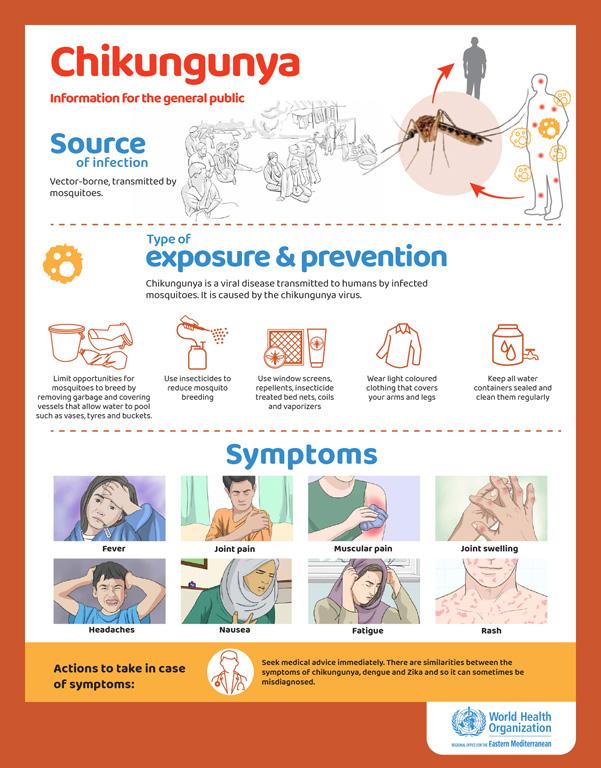As cases of chikungunya fever rise in China, public health officials and citizens alike are increasingly alert to the implications of this mosquito-borne illness. First identified in Africa in the 1950s, chikungunya has made its way to various corners of the globe, leading to outbreaks that pose significant health risks. With recent reports indicating a surge in infections in southern China, it is essential to understand the symptoms, transmission methods, and preventive measures associated with this virus. In this article, we delve into the key facts surrounding chikungunya fever, highlighting its impact on communities in China as health experts work to contain the growing threat.
What is Chikungunya Fever and How It Spreads
Chikungunya fever is a viral infection that primarily spreads through the bite of infected Aedes mosquitoes, particularly Aedes aegypti and Aedes albopictus. These mosquitoes thrive in tropical and subtropical regions, making the transmission of the virus more prevalent in areas with high humidity and warm temperatures. The symptoms of chikungunya typically manifest 2 to 12 days after being bitten and can include fever, intense joint pain, muscle pain, headache, nausea, fatigue, and rash. While most patients recover within a week, some may experience prolonged joint pain and other complications.
The spread of chikungunya relies heavily on the mosquito lifecycle and human movement. Human behaviors, such as increased travel and urbanization, facilitate the introduction and establishment of mosquitoes in new areas. Notably, vectors can breed in stagnant water sources, which are often found in urban environments. Awareness of preventive measures is crucial, including:
- Using mosquito repellent containing DEET or Picaridin
- Wearing long-sleeved clothes to minimize skin exposure
- Eliminating standing water in and around homes to reduce breeding sites
By understanding how chikungunya spreads, communities can better implement strategies to control its transmission and protect vulnerable populations.
Symptoms and Long-term Effects of Chikungunya Infection
Chikungunya infection presents an array of symptoms that can significantly affect individuals. The most common manifestations include:
- High fever: Sudden onset of fever often above 102°F (39°C).
- Severe joint pain: Intense arthralgia, particularly in the hands and feet, which can persist for months.
- Rash: A maculopapular rash can appear a few days following fever onset.
- Headache and fatigue: General malaise and weakness affecting daily activities.
- Nausea and vomiting: Including gastrointestinal symptoms which could lead to dehydration.
While many recover from chikungunya in two weeks, long-term effects can be debilitating for some. Chronic joint pain is a common sequela, affecting up to 70% of patients for months or even years. Many individuals may experience:
- Persistent arthritis: Inflammation and pain can resemble rheumatoid arthritis.
- Muscle pain: Ongoing muscle soreness and discomfort.
- Fatigue: A prolonged feeling of tiredness that interferes with day-to-day life.
Healthcare professionals are focusing on understanding these effects better, as well as on managing the symptoms effectively to improve the quality of life for affected individuals.
Prevention Strategies and Health Guidelines Amid Rising Cases
As the incidence of chikungunya fever increases in both urban and rural communities across China, health authorities are urging residents to adopt comprehensive prevention strategies to curb the spread of the virus. Key measures include avoiding mosquito bites through the use of insect repellent, wearing long-sleeved clothing, and ensuring that living spaces are equipped with screens or nets. Additionally, it is essential to eliminate potential mosquito breeding sites by regularly checking for standing water in containers, tires, or any other receptacles outdoors.
Education plays a crucial role in preventing the disease. Public health officials recommend the following guidelines for individuals and families to minimize their risk:
- Stay informed about local chikungunya outbreaks and follow guidance from health authorities.
- Maintain clean surroundings to reduce mosquito populations.
- Use air conditioning or window and door screens to keep mosquitoes out.
Furthermore, those experiencing symptoms such as high fever, joint pain, or rash are advised to seek medical attention promptly and to take precautions to prevent the spread of the virus to others.
Closing Remarks
As the number of chikungunya fever cases continues to rise in China, public health officials are urging citizens to remain vigilant and informed. With the potential for the virus to spread further, understanding its symptoms, transmission methods, and preventive measures is crucial for safeguarding public health. As the country navigates this emerging health concern, proactive community engagement and cooperation with health authorities will play a vital role in controlling the outbreak. It is essential for individuals to stay abreast of the latest developments and guidelines issued by health professionals to protect themselves and their families from this vector-borne disease. Continued monitoring, research, and public education will be key in combating chikungunya and ensuring a swift and effective response to this growing threat.
